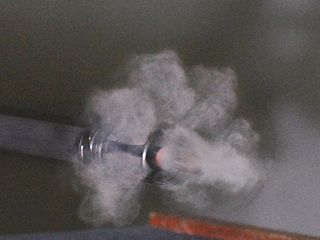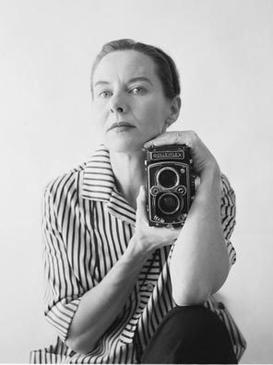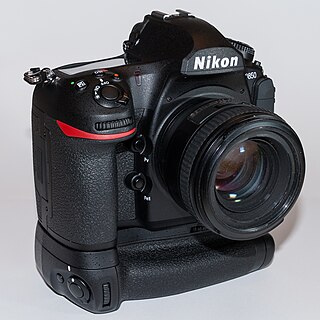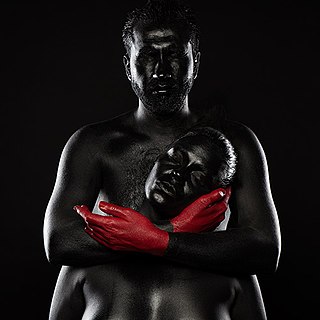
The Brownie was a series of camera models made by Eastman Kodak and first released in 1900.

Pyrotechnics is the science and craft of creating such things as fireworks, safety matches, oxygen candles, explosive bolts and other fasteners, parts of automotive airbags, as well as gas-pressure blasting in mining, quarrying, and demolition. This trade relies upon self-contained and self-sustained exothermic chemical reactions to make heat, light, gas, smoke and/or sound. The name comes from the Greek words pyr ("fire") and tekhnikos.

A flash is a device used in photography that produces a brief burst of light at a color temperature of about 5,500 K to help illuminate a scene. A major purpose of a flash is to illuminate a dark scene. Other uses are capturing quickly moving objects or changing the quality of light. Flash refers either to the flash of light itself or to the electronic flash unit discharging the light. Most current flash units are electronic, having evolved from single-use flashbulbs and flammable powders. Modern cameras often activate flash units automatically.

An instant camera is a camera which uses self-developing film to create a chemically developed print shortly after taking the picture. Polaroid Corporation pioneered consumer-friendly instant cameras and film, and were followed by various other manufacturers.

Bhang is an edible preparation made from the leaves of the cannabis plant originating from the Indian subcontinent. It has been used in food and drink as early as 1000 BC in ancient India. Bhang is traditionally distributed during the spring festival of Maha Shivaratri and Holi. Bhang is mainly used in bhang shops, which sell the cannabis-infused Indian drinks bhang lassi and bhang thandai.

A flash suppressor, also known as a flash guard, flash eliminator, flash hider, or flash cone, is a muzzle device attached to the muzzle of a rifle that reduces its visible signature while firing by cooling or dispersing the burning gases that exit the muzzle, a phenomenon typical of carbine-length weapons. Its primary intent is to reduce the chances that the shooter will be blinded in low-light shooting conditions. Contrary to popular belief, it is only a minor secondary benefit if a flash suppressor reduces the intensity of the flash visible to the enemy.
In photography, bracketing is the general technique of taking several shots of the same subject using different camera settings, typically with the aim of combining the images in postprocessing. Bracketing is useful and often recommended in situations that make it difficult to obtain a satisfactory image with a single shot, especially when a small variation in exposure parameters has a comparatively large effect on the resulting image. Given the time it takes to accomplish multiple shots, it is typically, but not always, used for static subjects. Autobracketing is a feature of many modern cameras. When set, it will automatically take several bracketed shots, rather than the photographer altering the settings by hand between each shot.

A point-and-shoot camera, also known as a compact camera and sometimes abbreviated to P&S, is a still camera designed primarily for simple operation. Most use focus free lenses or autofocus for focusing, automatic systems for setting the exposure options, and have flash units built in. They are popular for vernacular photography by people who do not consider themselves photographers but want easy-to-use cameras for snapshots of vacations, parties, reunions and other events.

Candid photography is photography captured without creating a posed appearance. This style is also called street photography, spontaneous photography or snap shooting. Professional photographers sometimes shoot candid photos of strangers on the street or in other public places such as parks and beaches. Candid photography captures natural expressions and moments that might not be possible to reproduce in a studio or posed photo shoot. This style of photography is most often used to capture people in their natural state without them noticing the camera. The main focus is on capturing the candid expressions and moments of life. Candid photography can be used in a variety of settings such as family gatherings, special events, and everyday street scenes. It is also a popular choice for wedding photos and professional portraits. Candid photography is often seen as a more honest representation of the subject than posed photography. To capture candid photos, the photographer may need to observe the subject from a distance or use a long lens or telephoto zoom lens. This allows for capturing the subject in their natural environment without them being aware of the camera. The photographer may need to be quick and have an eye for interesting compositions and backgrounds.

When setting photoflash exposures, the guide number (GN) of photoflash devices is a measure photographers can use to calculate either the required f‑stop for any given flash-to-subject distance, or the required distance for any given f‑stop. To solve for either of these two variables, one merely divides a device's guide number by the other.

Digital photography uses cameras containing arrays of electronic photodetectors interfaced to an analog-to-digital converter (ADC) to produce images focused by a lens, as opposed to an exposure on photographic film. The digitized image is stored as a computer file ready for further digital processing, viewing, electronic publishing, or digital printing. It is a form of digital imaging based on gathering visible light.
The following outline is provided as an overview of and topical guide to photography:

Nature photography is a wide range of photography taken outdoors and devoted to displaying natural elements such as landscapes, wildlife, plants, and close-ups of natural scenes and textures. Nature photography tends to put a stronger emphasis on the aesthetic value of the photo than other photography genres, such as photojournalism and documentary photography.

Banquet photography is the photography of large groups of people, typically in a banquet setting such as a hotel or club banquet room, with the objective of commemorating an event. Clubs, associations, unions, circuses and debutante balls have all been captured by banquet photographers.
Architectural photography is the subgenre of the photography discipline where the primary emphasis is made to capturing photographs of buildings and similar architectural structures that are both aesthetically pleasing and accurate in terms of representations of their subjects. Architectural photographers are usually skilled in the use of specialized techniques and cameras for producing such specialized photography.

Jini Dellaccio was an American photographer best known for her images of rock and pop acts of the 1960s, particularly in the Pacific Northwest. Her photographs of the Sonics, the Wailers, Merrilee Rush, the Daily Flash and many others were frequently used for album covers, posters, and publicity stills, and - along with her shots of major acts such as Neil Young, the Rolling Stones, the Beach Boys, and The Who - have been widely reproduced in books, CDs, articles, and gallery exhibitions.
Stephen Wayda is an American professional photographer, best known for his photography for Playboy magazine.

Éruption volcanique à la Martinique, released in the United States as The Eruption of Mount Pelee and in Britain as The Terrible Eruption of Mount Pelée and Destruction of St. Pierre, Martinique, is a 1902 French short silent film directed by Georges Méliès. The film is a short reconstruction, using miniature models, of a recent historical event: the eruption on 8 May 1902 of Mount Pelée, which destroyed the town of Saint-Pierre, Martinique.

The Nikon D850 is a professional-grade full-frame digital single-lens reflex camera (DSLR) produced by Nikon. The camera was officially announced on July 25, 2017, launched on August 24, 2017, and first shipped on September 8, 2017. Nikon announced it could not fill the preorders on August 28, 2017 and filled less than 10% of preorders on the first shipping day. It is the successor to the Nikon D810.

Low-key photography is a genre of photography consisting of shooting dark-colored scenes by lowering or dimming the "key" or front light illuminating the scene, and emphasizing natural or artificial light only on specific areas in the frame. This photographic style is usually used to create a mysterious atmosphere, that only suggests various shapes, often graphic, letting the viewer experience the photograph through subjective interpretation and often implies painting objects or the human body with black non-toxic dyes or pigments.
















